13 Wild Animals in Suriname [Wildlife in Suriname]
Want to know more about the wildlife in Suriname?
Discover 13 wild animals in Suriname in this post, as well as interesting facts about them. 🇸🇷
Learn All About Surinamese Animals
Ready to learn all about Surinamese animals?
I’ve always been fascinated by animals, and by how they can be so different from one country to another. In this guide, we’ll focus on the many animals Suriname has on the land, in the sky, and underwater.
I’ve split the guide into 4 categories:
- Native animals from Suriname
- Endangered animals of Suriname
- What is Suriname national animal?
- How many animals native to Suriname?
Let’s dive in right away with our first category!
Native Animals from Suriname
Suriname, sometimes spelled Surinam, is a South American country located in the northern part of the continent, south of the Atlantic Ocean. It is considered a culturally Caribbean country, is the only country outside of Europe where Dutch is the main and official language, is a tropical country dominated by rainforests, and used to be a Dutch colony. It is bordered by Brazil, Guyana, and French Guiana, and its capital and largest city is Paramaribo, which counts more than 240,000 inhabitants.
An interesting part of the country that I wanted to tackle is its wildlife. In light of that, I have listed the best of it, and I hope you will love learning what animals live in Suriname.
Here’s the Suriname animals list.
1. Leatherback sea turtle
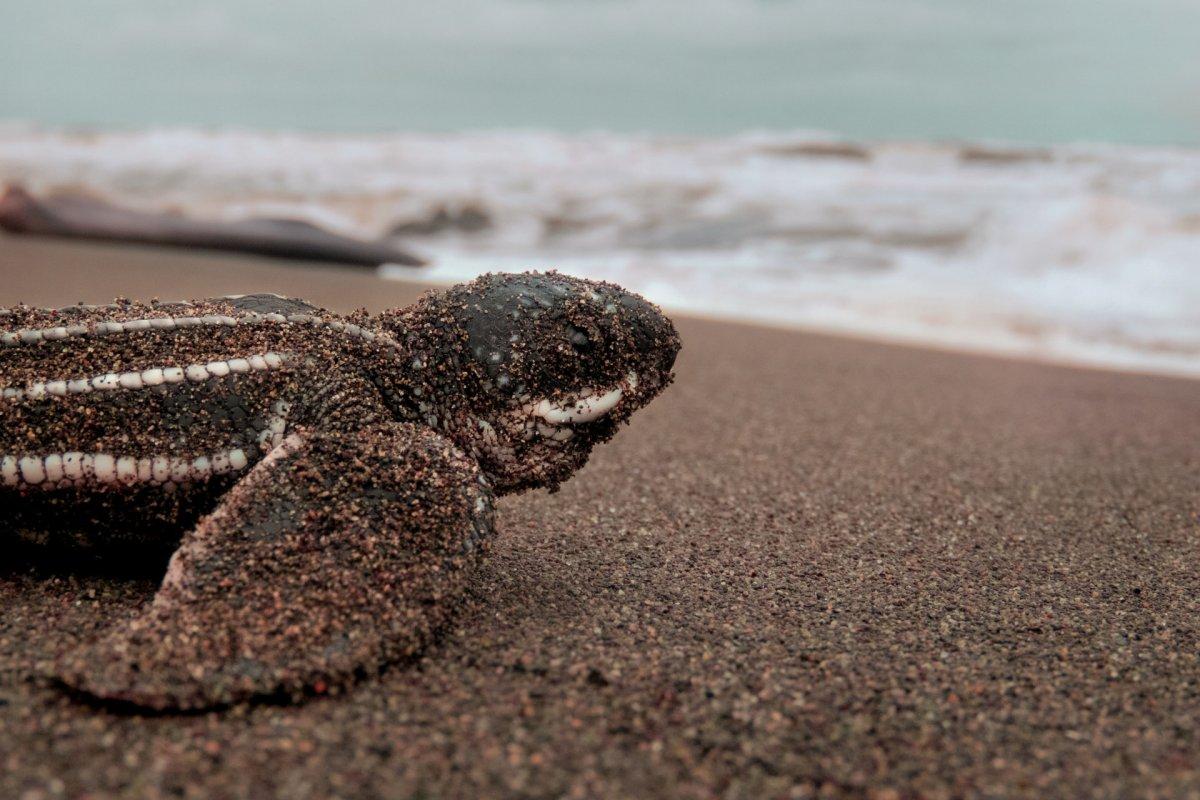
- Name: Leatherback sea turtle
- Scientific name: Dermochelys coriacea
- Conservation status:
The leatherback sea turtle, also known as the lute turtle, the leathery turtle, or simply the luth, is the largest of all turtles and the heaviest reptile outside of crocodiles. It is a very impressive animal with a global distribution, focused on subtropical and tropical areas.
This sea turtle nests on the beaches of Suriname, one of its most significant Atlantic nesting sites. Nesting takes place between February and July, which is the period during which this species is most vulnerable.
2. Scarlet ibis
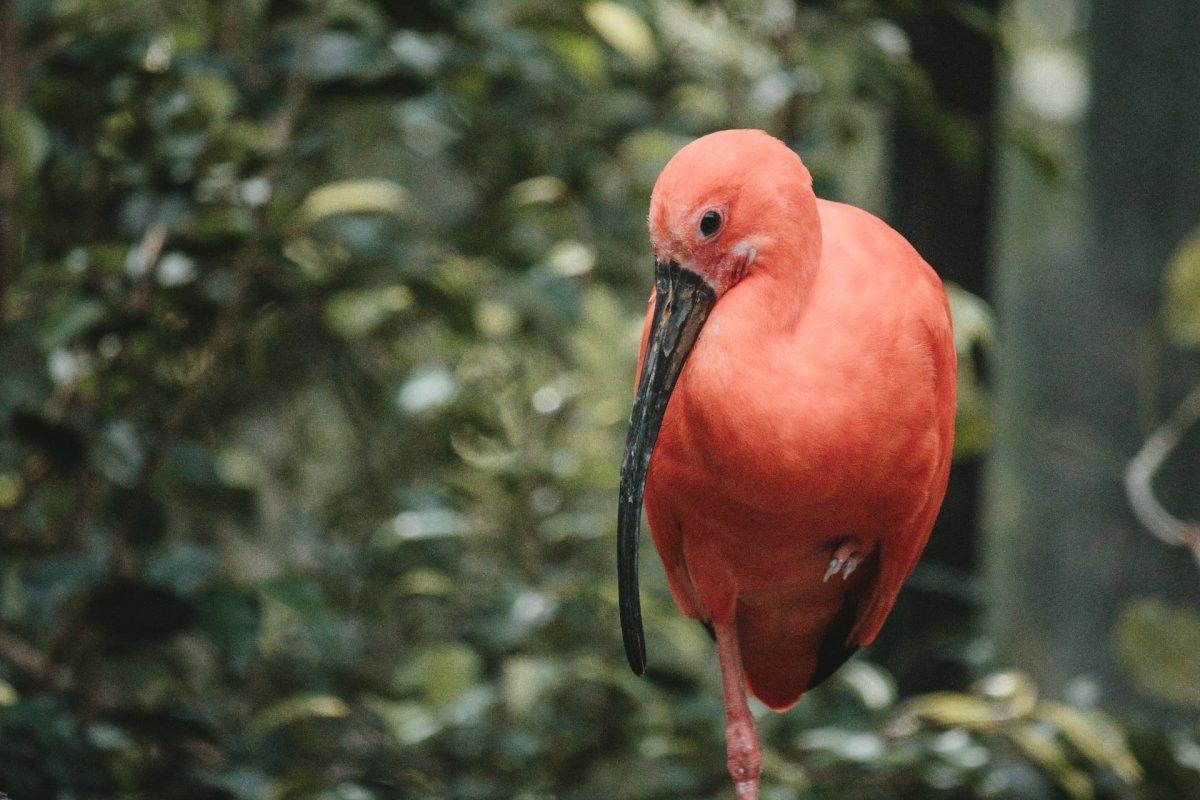
- Name: Scarlet ibis
- Scientific name: Eudocimus ruber
- Conservation status:
The scarlet ibis is a species of ibis native to South America and parts of the Caribbeans. It is easily distinguishable from other ibis species thanks to its striking, beautiful scarlet coloration from which it gets its name.
This bird lives in pairs and builds nests in a simple style, usually platforms of sticks. It inhabits wet areas such as mangroves and swamps but keeps its nest far above the water.
3. Orange-winged amazon
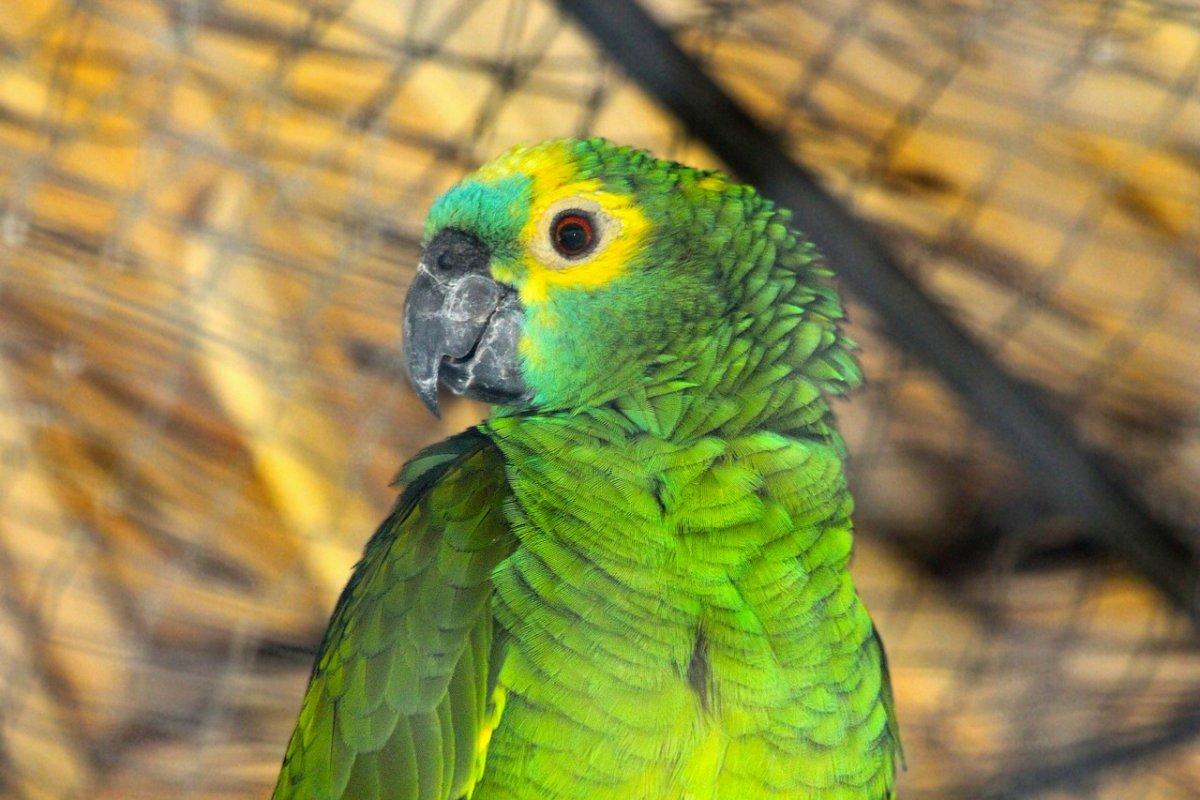
- Name: Orange-winged amazon
- Scientific name: Amazona amazonica
- Conservation status:
The orange-winged amazon, also known as the loro guaro or the orange-winged parrot, is a species of parrot native to tropical South America. It can be found in countries such as Suriname, Brazil, and Colombia, and it creates its nests in the lagoons of Suriname, usually in tree cavities.
This bird is pretty loud and makes a lot of high-pitched screams. It feeds on nuts, seeds, fruit, blossoms, berries, and leaf buds, and has feral colonies in London and Miami.
4. Atlantic goliath grouper
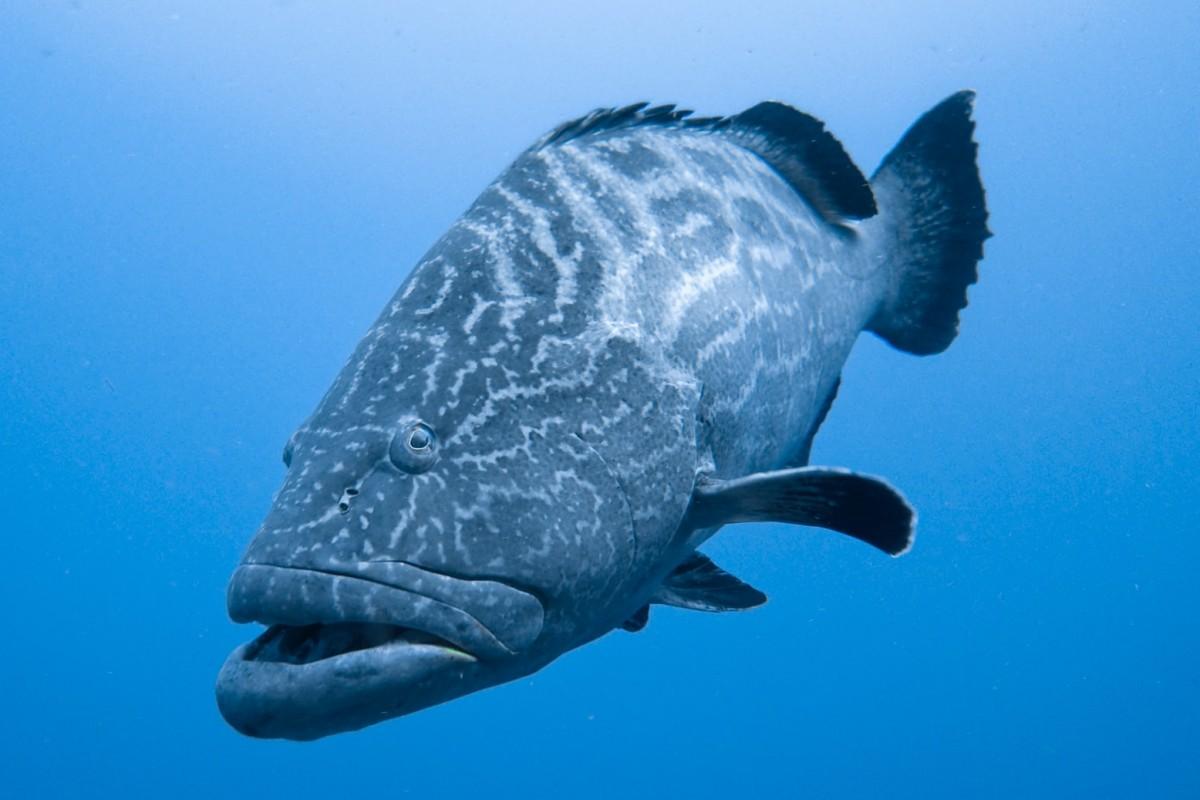
- Name: Atlantic goliath grouper
- Scientific name: Epinephelus itajara
- Conservation status:
The Atlantic goliath grouper, also known as the jewfish, is a species of saltwater fish native to the Caribbean part of the Atlantic Ocean. It is one of the largest species of bony fish in the world and can be found at shallow depths between 1 and 100 m / 3 and 328 ft.
This grouper is seriously threatened by human activities in Suriname, such as gold mining, pollution, and fishing accidents.
5. White-faced saki
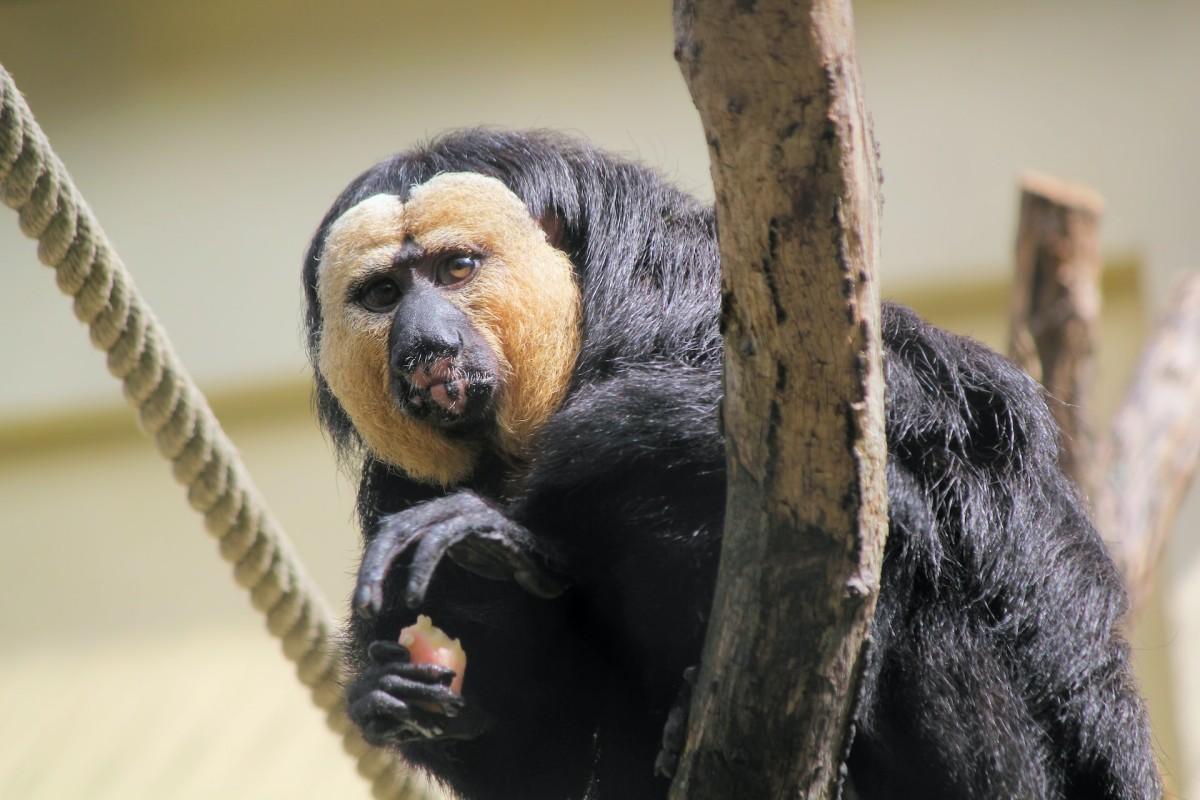
- Name: White-faced saki
- Scientific name: Pithecia pithecia
- Conservation status:
The white-faced saki, also known as the golden-faced saki or the Guianan saki, is a species of New World saki monkeys found in Suriname, Brazil, Guyana, French Guiana, and Venezuela. It inhabits the lower canopy and understory of the forest and feeds on fruits, seeds, nuts, and insects.
This monkey is specialized in swinging from tree to tree, which is known as brachiation, but it can also be terrestrial, primarily when foraging for food.
6. Blue poison dart frog
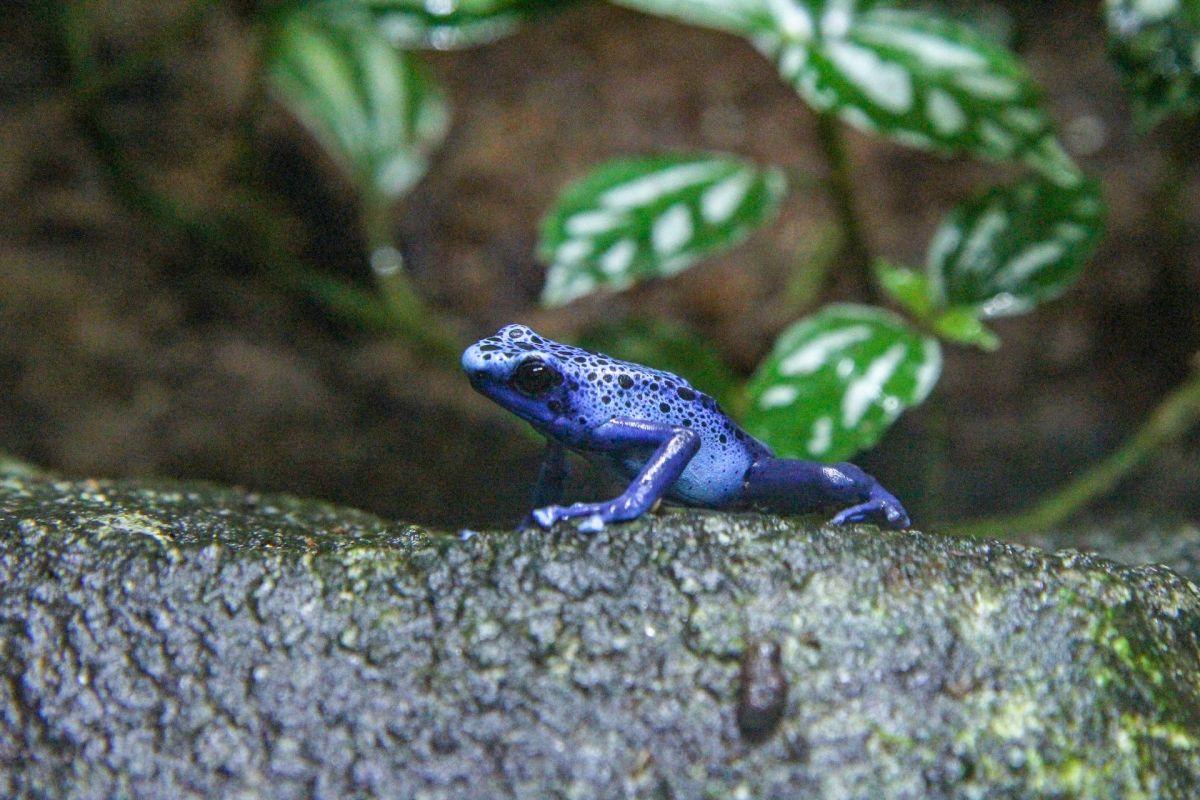
- Name: Blue poison dart frog
- Scientific name: Dendrobates tinctorius “azureus”
- Conservation status:
The blue poison dart frog is a species of poison dart frog native to southern Suriname and far northern Brazil. It has a striking azure color, which is used to reveal its skin toxins and warn potential predators; however, these toxins are lost in captivity because of different diets.
This frog usually stays near bodies of water and is a mainland animal. It spends most of its awake time hopping around in short leaps and feeding on insects such as ants, flies, and beetles, as well as spiders and caterpillars.
7. Southern naked-tailed armadillo
- Name: Southern naked-tailed armadillo
- Scientific name: Cabassous unicinctus
- Conservation status:
The southern naked-tailed armadillo is a small species of armadillo native to much of the northern half of South America. It is one of the rare armadillos to be considered of least concern, thanks to its very wide range.
This mammal is covered in protective scales, and almost exclusively feeds on ants and termites. It is both solitary and nocturnal and spends much of its time digging burrows about 16 cm / 6.3 in in diameter.
8. Jaguar

- Name: Jaguar
- Scientific name: Panthera onca
- Conservation status:
No list of South American animals would be complete without their most iconic member: the jaguar.
The jaguar is the largest cat species native to the Americas, and the third-largest one in the world. It is incredibly strong, crushing tortoise shells without any issue, and has a beautiful, blotched coat, which is the main reason for poachers for attacking it. It can be found throughout much of Central and South America.
9. South American tapir
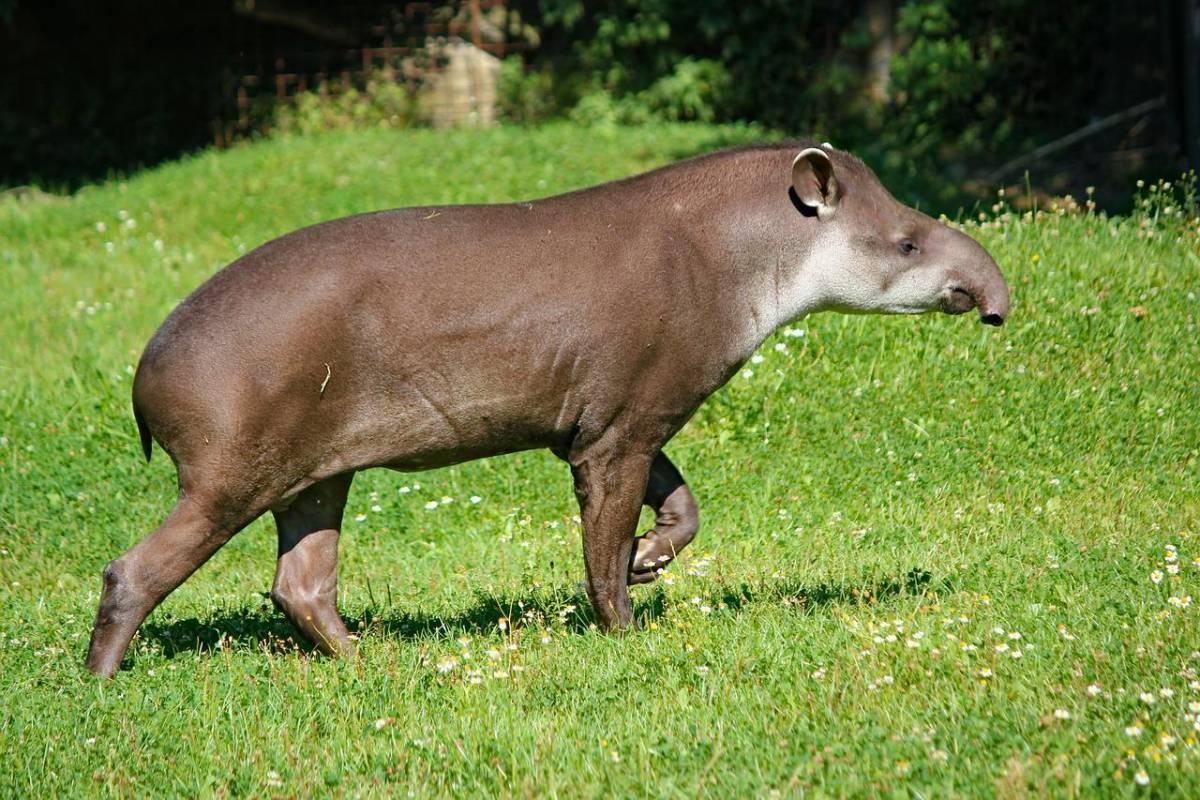
- Name: South American tapir
- Scientific name: Tapirus terrestris
- Conservation status:
The South American tapir, also known as the little black tapir, the kabomani tapir, the Brazilian tapir, the lowland tapir, the maned tapir, or the Amazonian tapir, is one of the four species of tapir, and the largest, native, terrestrial mammal in the Amazon.
Despite this, this tapir is the smallest of the tapirs, and it usually stays near water in the Amazon rainforest and river basin.
10. Suriname tapeti
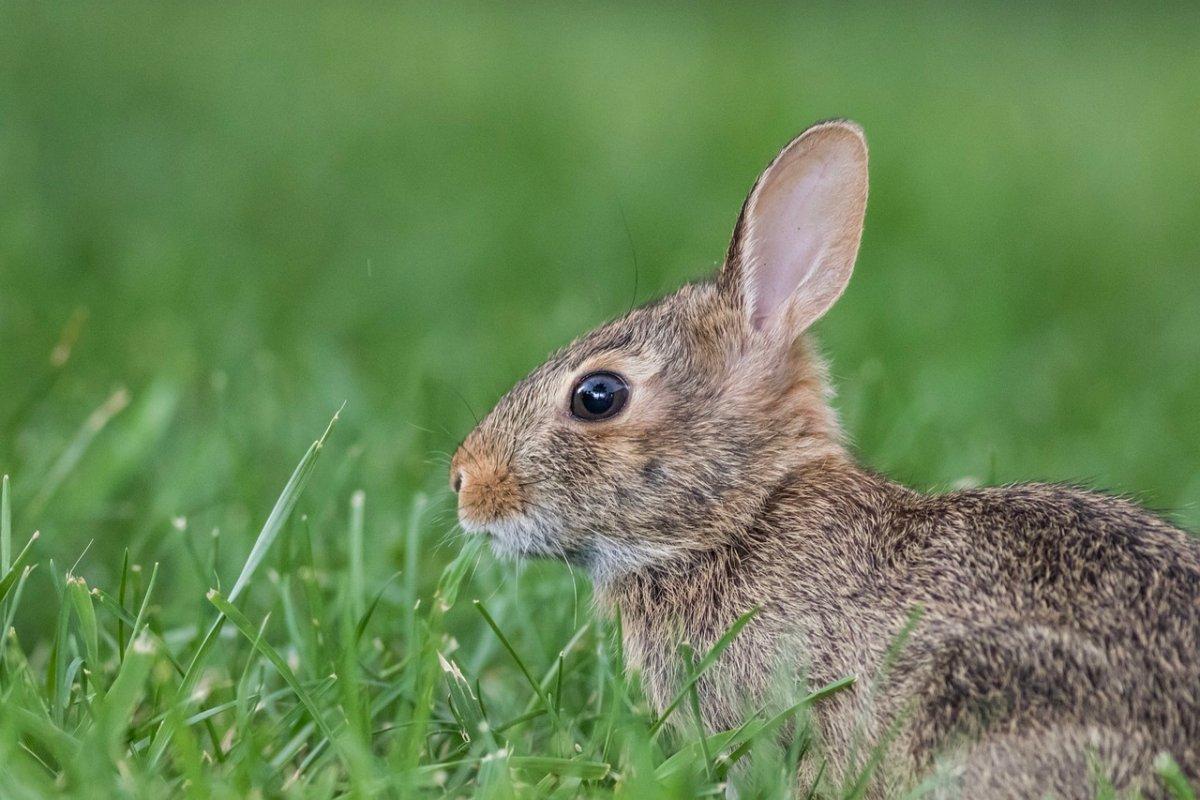
- Name: Suriname tapeti
- Scientific name: Sylvilagus parentum
- Conservation status:
The Suriname tapeti, also known as the Suriname lowland forest cottontail, is a recently discovered species of cottontail rabbit endemic to western Suriname. It was first found during the 1980s and described in 2017, and it is a relatively large cottontail rabbit.
Although not much is known about the Suriname tapeti, it is most likely already endangered due to environmental degradation of the whole region, but its discovery could help and boost conservation efforts in Suriname.
11. Atlantic spotted dolphin
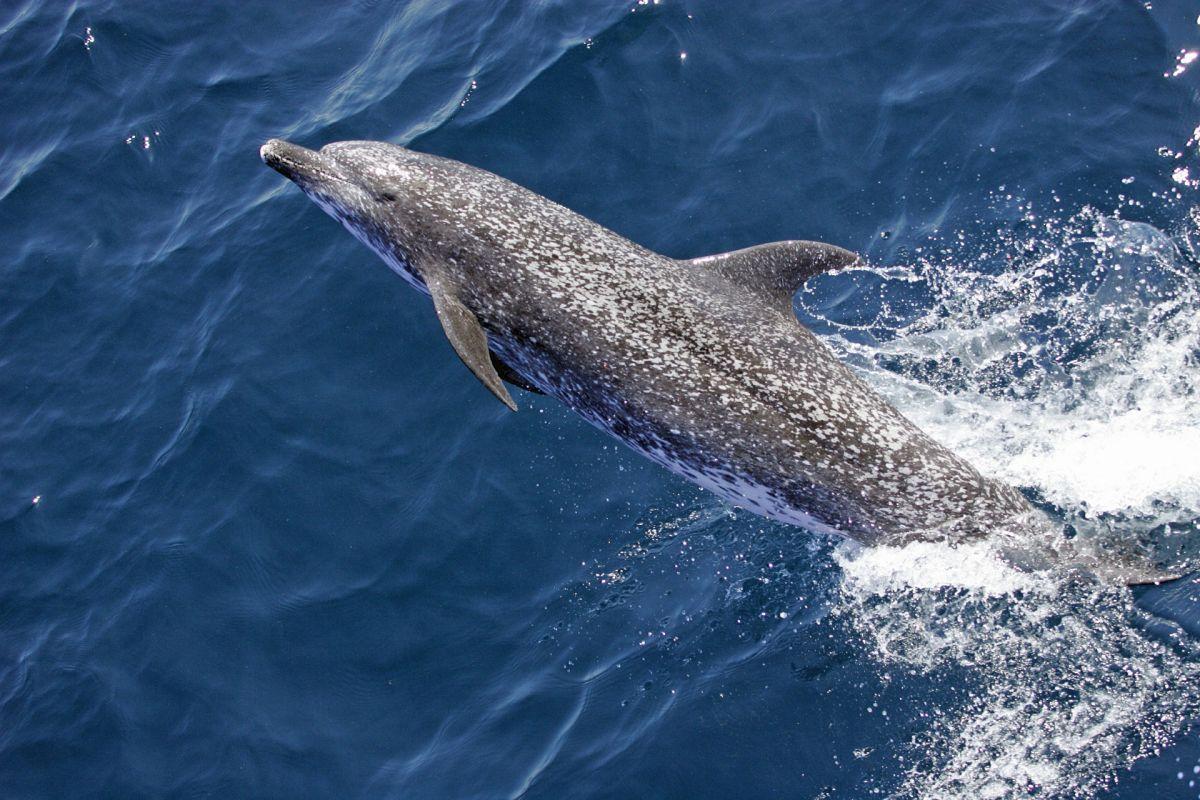
- Name: Atlantic spotted dolphin
- Scientific name: Stenella frontalis
- Conservation status:
There are plenty of incredible marine animals in Suriname, since the country is located at the crossroads of the Caribbean Sea and the Atlantic Ocean, and has a tropical climate.
The Atlantic spotted dolphin is a species of dolphin endemic to the warm temperate and tropical waters of the Atlantic Ocean. Its coloring largely varies as it grows, becoming more and more spotted and whiter over the years.
12. South American coati
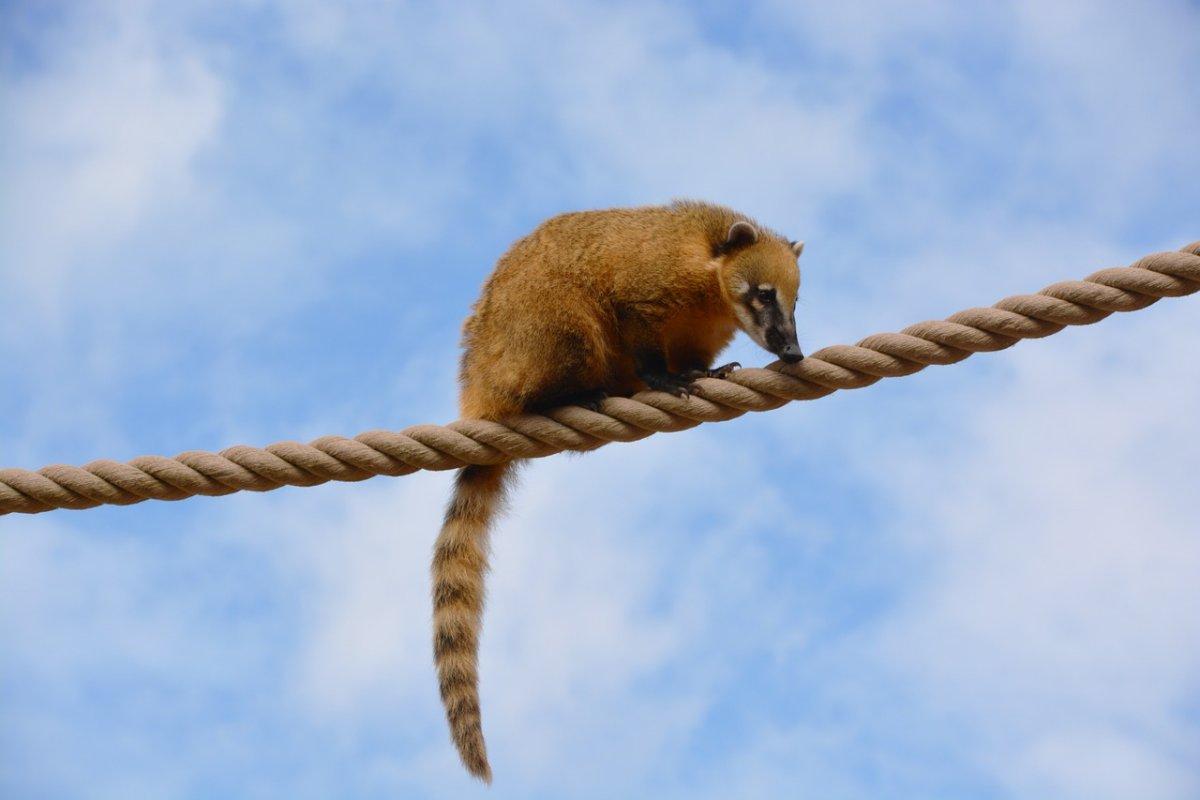
- Name: South American coati
- Scientific name: Nasua nasua
- Conservation status:
The South American coati, also known as the ring-tailed coati, is a species of mammal native to subtropical and tropical areas of South America. It is part of the raccoon family and has a highly variable color with a long, ringed tail.
It can be found at altitudes of up to 2,500 m / 8,200 ft and lives in the lowland forests of Suriname. While males are solitary, females live in large bands of 15 to 30 members.
13. Ocelot
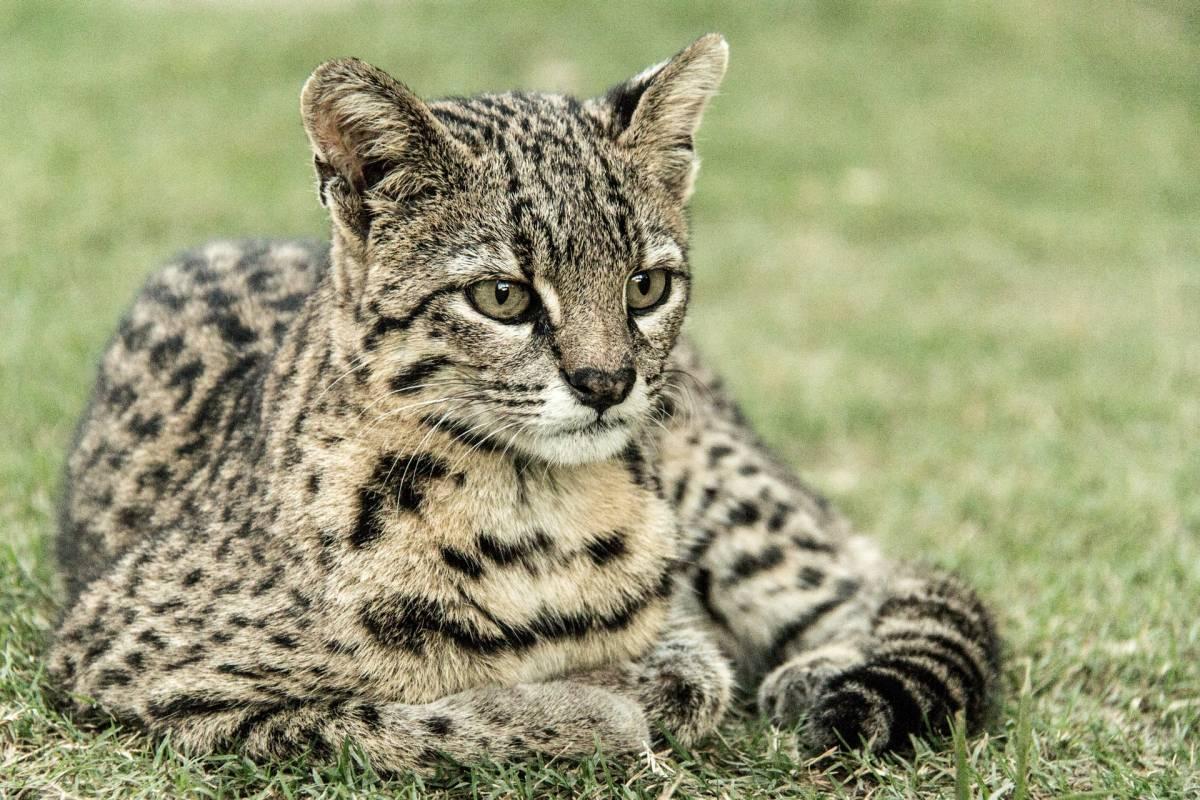
- Name: Ocelot
- Scientific name: Leopardus pardalis
- Conservation status:
The ocelot is a medium-sized species of wild cat native to Central and South America, from the far southwestern United States to northern Argentina. It is an excellent climber, leaper, and swimmer, and although it is listed as least concern, it is seriously threatened by road accidents, hunting, and habitat destruction.
This felid is locally known as “heitigrikati” in Suriname, and hunting it is banned within the country.
—
So there you have them, these were my 13 wild animals in Suriname. I hope you enjoyed this list and that you learned something new today.
In case you want to learn more about Suriname wildlife, feel free to keep reading, as I still have lots of things to tell you about:
Endangered Animals of Suriname
This is definitely the saddest part of the list, but it is very important to raise awareness. Because of this, let’s go through the list of endangered animals in Suriname.
Here are the animals in danger of extinction in Suriname.
- None
- Daggernose shark
- Scoophead shark
- Smalleye round ray
- Wingfin stingray
- Great hammerhead
- and 6 more…
- Longfin mako
- Sun parakeet
- Golden tilefish
- Caribbean reef shark
- Giant otter
- and 21 more…
To see the full list of endangered species in Suriname, head over to the International Union for Conservation of Nature’s Red List.
What is the National Animal of Suriname?
The national animal of Suriname is the lesser kiskadee.
The lesser kiskadee is a species of passerine bird native to Suriname, as well as lots of other Central and South American countries such as Brazil, Argentina, Ecuador, Venezuela, and Bolivia.
It inhabits subtropical and tropical moist shrubland and swamps and usually stays near bodies of water.
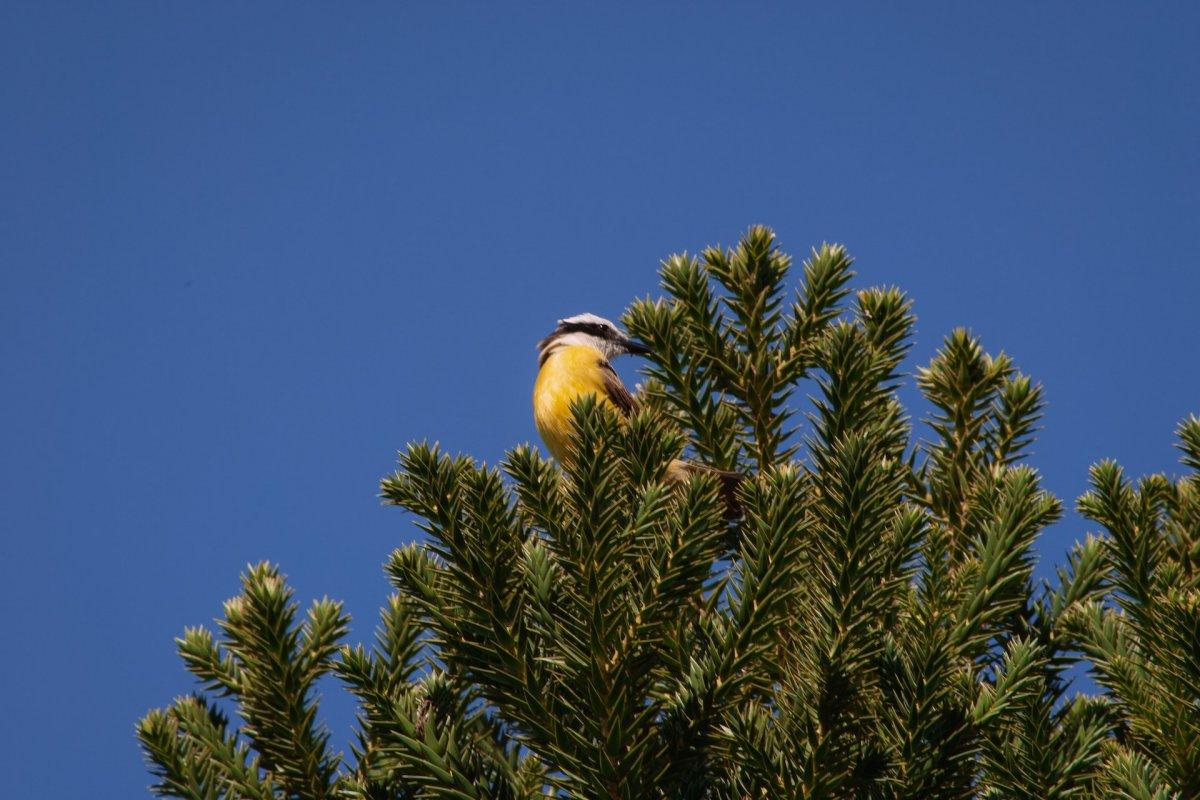
How Many Animals Native to Suriname?
What is the diversity of native animals in Suriname?
Let’s look at the total number of species of Chordata (mammals, birds, fishes, and reptiles).
Total number of animal species in Suriname: 2,289 (14,422 in total in South America)
More About Animals in the World!
Loved these Suriname animal facts? Want to see what animals live in other countries?
Then check out these posts:
Or click here to see ALL the facts up on the blog! Spoiler alert: there’s A LOT of them.
Share the knowledge! Click on the buttons below to share information about these famous animals in Suriname with your friends, and help them learn more about the world 🙂

![21 Wild Animals in Tasmania [Wildlife in Tasmania]](https://www.kevmrc.com/wp-content/uploads/2023/01/21-wild-animals-in-tasmania-australia.jpg)
![35 Wild Animals in Colombia [Wildlife in Colombia]](https://www.kevmrc.com/wp-content/uploads/2022/07/35-wild-animals-in-colombia.jpg)
![13 Wild Animals in Victoria [Wildlife in Victoria]](https://www.kevmrc.com/wp-content/uploads/2023/01/13-wild-animals-in-victoria-australia.jpg)